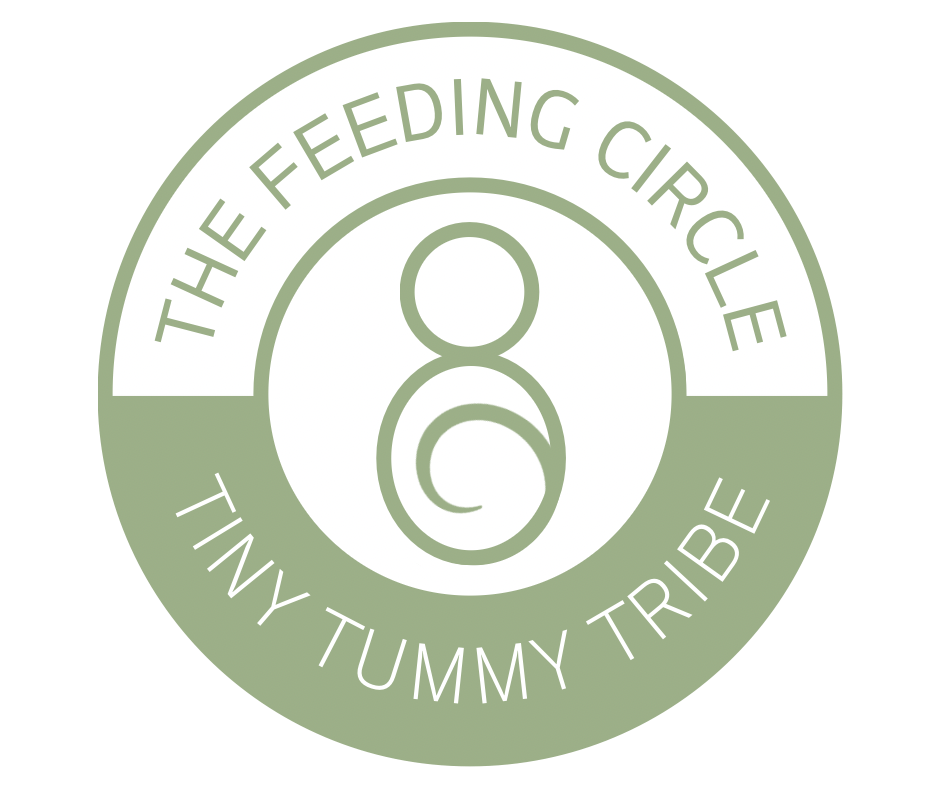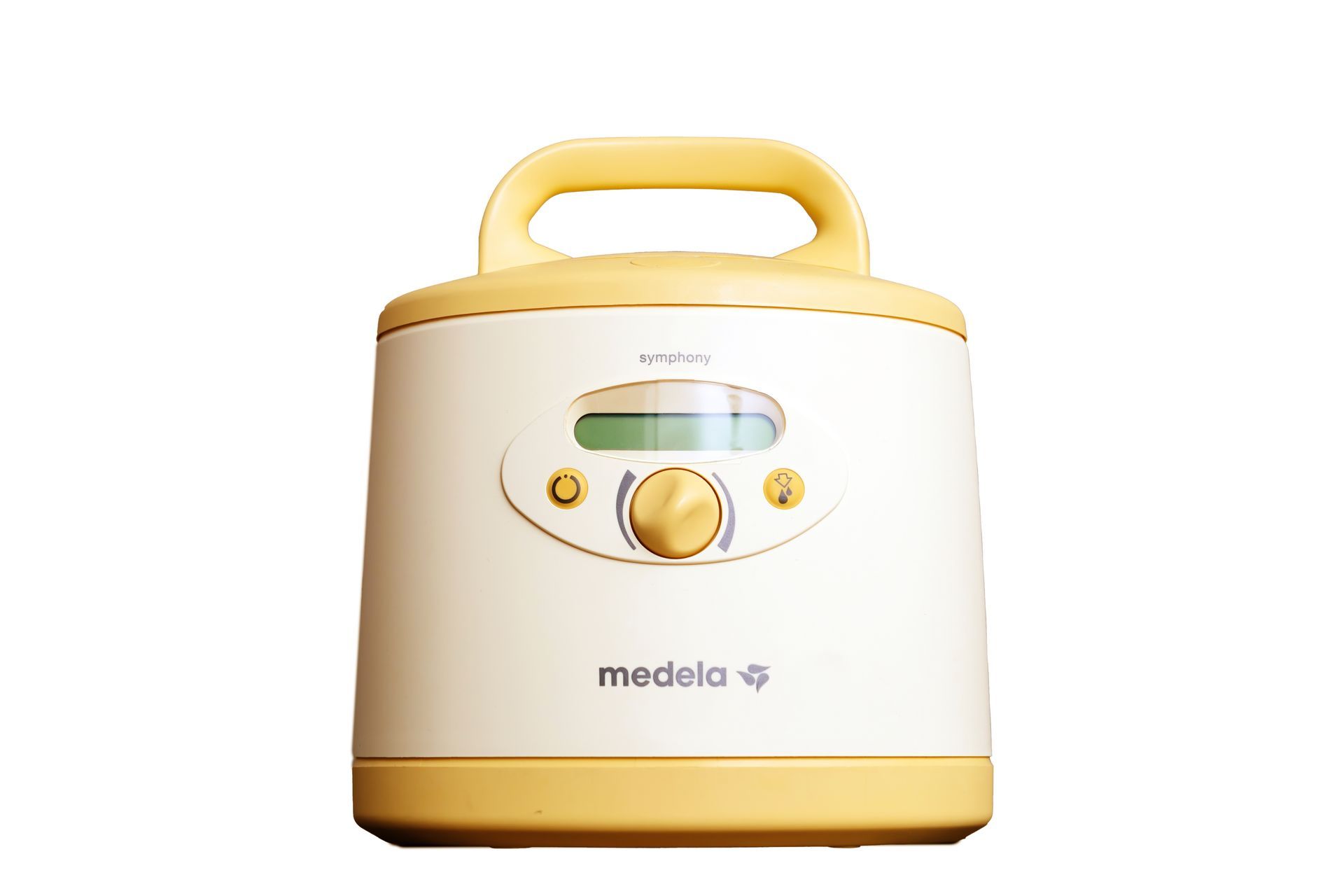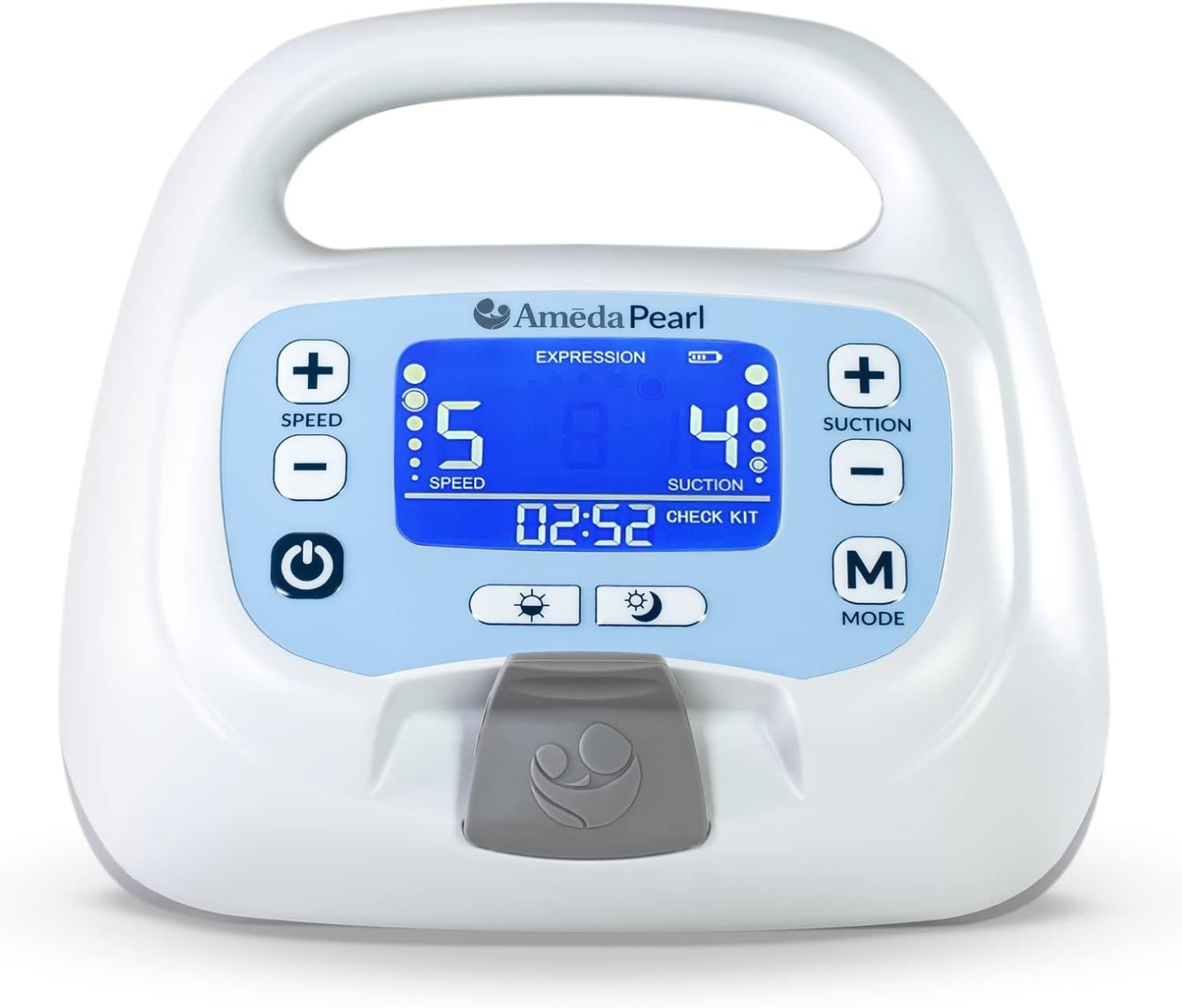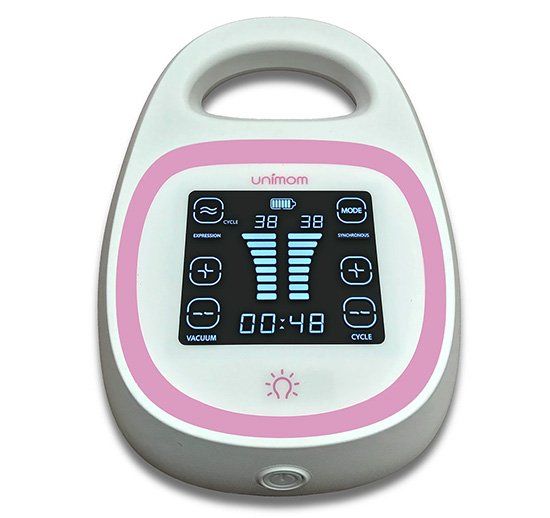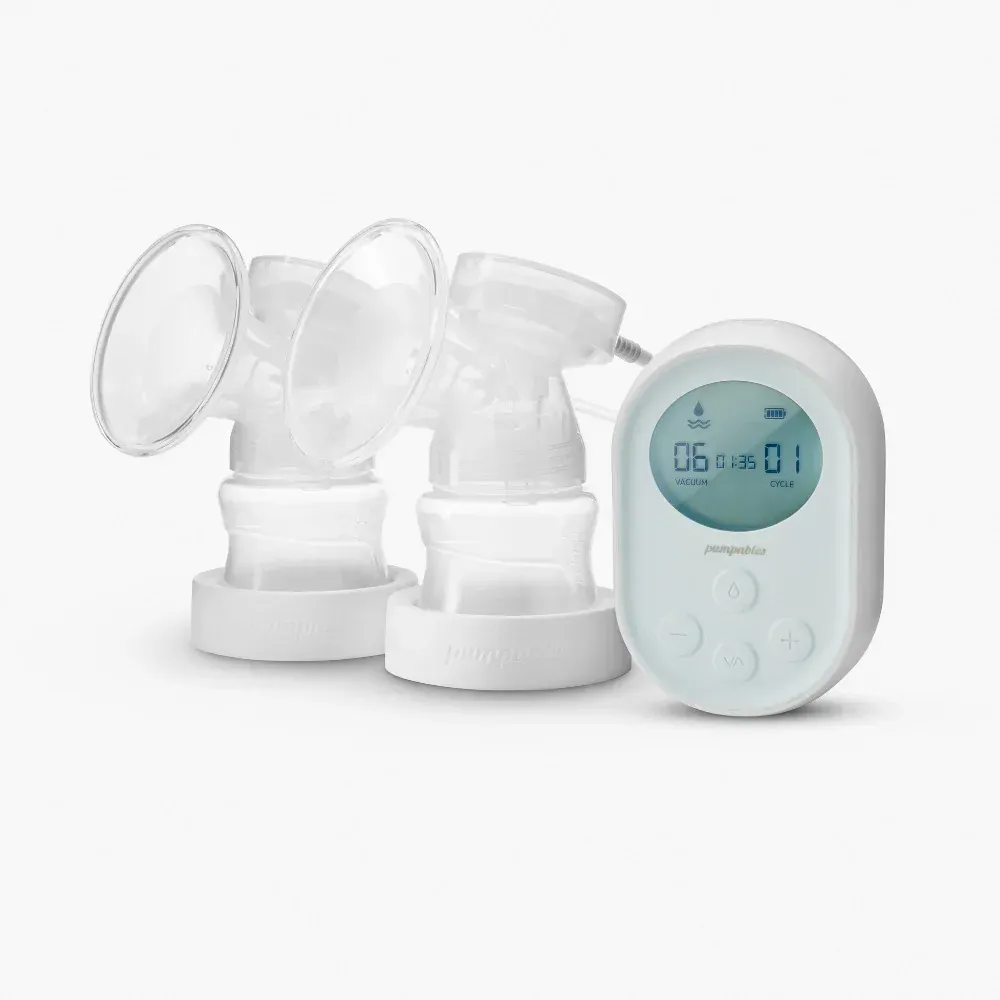Let's Talk about Pumps
Hey there, parents! Whether you’re a first-time parent or a seasoned pro, pumping can sometimes feel overwhelming with all the options out there! In this post, we’ll explore pumping, share some tips to make it easier, and highlight some fantastic pump options to help you on your journey!

Do I Need a Pump?
First things first: you don’t need a pump to successfully feed your baby. People have nourished babies for thousands of years without one — and if you prefer to feed at the breast/chest and don’t want to use a pump, that is completely valid.
That said, there are plenty of reasons why someone might choose to or need to use a pump.
These might include (but aren’t limited to):
- A planned or unplanned NICU stay
- A history of low milk supply
- Diabetes or other endocrine conditions
- Breast or chest surgeries involving tissue removal
- A personal choice to exclusively pump
- Being temporarily or permanently unable to latch baby
If you do plan to pump — whether occasionally or exclusively — it’s helpful to understand the different types of pumps available and think about your specific needs.
Ask yourself:
How often will I be away from my baby?
Will I be gone for just a couple of hours here and there, or full-time (e.g., 40+ hours/week)?
Was my baby born early or admitted to the NICU?
Each of these factors can influence what kind of pump will best support your feeding goals. If you're unsure, reach out to a lactation consultant (like us!) for guidance.
Choosing the Right Pump
Pumps aren’t one-size-fits-all. Each body responds differently to different types of pumps, just like every baby feeds a little differently. The goal of pump design is to mimic the way babies stimulate milk production — but even the best pump can’t exactly replicate your baby’s unique suck pattern.
That’s why the “best pump” for one person may not be the right fit for another.
When choosing a pump, the most important factor is that it helps effectively trigger your let-down reflex and supports ongoing milk removal. Some pumps have great features but may not be effective for every user. Others may not be as popular but work beautifully for your specific body and situation.
Types of Pumps
There are several types or categories of breast pumps, each designed for different levels of use and support. Let’s break them down.
1."Hospital Grade"/Multiuser pumps
The term “hospital-grade pump” is not recognized by the FDA and there is no consistent definition for this term, so individual companies could mean different things when they label their pumps as hospital-grade.
Multi user pumps that are a double electric pump and they are certified by the FDA to be safe for multiple users (they have a barrier between the flange kit and pump motor).
These pumps usually have a longer pump life due the its powerful motor.
They are typically more expensive than personal use pumps so people typically rent them for a short period of time.
They are ideal for establishing or maintaining a milk supply, especially for NICU/premature infants.
Here are some notable options:
Medela Symphony: This option is commonly used in hospitals; The Symphony's powerful yet gentle suction and adjustable settings make it an excellent choice for both new and experienced parents.
Ameda Pearl: This pump is also used in hospitals and features advanced technology with a user-friendly design to support parents in their feeding journey. Its light weight and CustomControl™ feature allows for personalized speed and suction settings making it a great choice for busy parents.
Unimom Opera: Known for its quiet operation and a lightweight design, this is another solid choice for establishing milk supply. A great feature is its dual motor customizability, with ability to adjust variable suction strength and cycle speeds on each side for personalized experience.
Spectra Gold: This pump uses independent adjustability with dual motors allowing adjustable suction levels and cycle speeds on both sides, for a highly personalized and comfortable pumping experience. If you are interested in renting them please click on the links below.
2. Primary Personal Pump
A primary personal pump is typically a single or double electric pump — meaning it allows you to pump from one breast or both simultaneously. We usually recommend a double pump, simply because it saves time. And when you’re caring for a newborn, time is one of your most precious (and limited!) resources.
Options that are popular with our clients
Choosing the right pump can feel overwhelming—there are so many options, and the right one really depends on your unique needs and preferences. Whether you’re pumping exclusively, heading back to work, or adding in a pump for flexibility, here’s a few of our clients favorite primary pumps.
This is a multi user pump (if you find a second hand one you could safely use it, you would need to buy a new pump kit!).
Some, insurances will cover this pump.
Known for its quiet operation and a lightweight design, this is solid pump choice for and exclusive pumper or working parent.
A great feature is its dual motor customizability, with ability to adjust variable suction strength and cycle speeds on each side.
This is also a multi user pump
This pump offers very efficient pumping, has adjustable customization.
You can customize the suction strength and speed independently on both sides, which is a great feature!
The only downside to this pump is that it is not portable.
Its a little more pricey and a bit bigger and heavier than the other spectra's but its such a great pump.
Spectra S1 and Spectra S2:
These pumps are usually covered by insurance and are known for their consistency, excellent suction and quiet operation, these pumps are fantastic for daily use and very popular choice with many parents.
The motor life of the Spectra pumps are excellent, they have a 1500 hour motor expectancy.
The difference between them is that the S1 has a rechargeable battery so it portable, vs the S2 which needs to be plugged in.
Decent option, not the greatest pump but sometimes its the best option of what is covered by your insurance.
It comes in both a rechargeable battery and plug to wall option, so be sure to know which one you are choosing when ordering as they look identical.
This pump is quiet and easy to use and lightweight.
3. Portable Primary Pumps
Perfect for on-the-go pumping, these compact powerhouses pack serious suction into small packages. If you are looking for a more wearable option we often recommend using a collection cup system with these pumps. Baby Buddha pump has a wearable cup and Legendary milk has some silicone collection cups that are popular too.
Options that are popular with our clients:
Pumpables Genie Advanced:
This compact and customizable pump is user-friendly and known for its comfort, making it ideal for various pumping needs.
Compact and lightweight, it offers powerful suction (NOT for very sensitive nipples) and an intuitive design that makes pumping easy.
4. Wearable Pumps
Wearable pumps have become increasingly popular for their convenience and portability—but as lactation consultants, we approach them with caution, especially when milk supply is still being established. These pumps often have weaker suction, limited customization for cycle speed and vacuum, and less effective milk removal compared to high-quality double electric primary pumps. While they’re great for occasional use or maintaining supply once it’s established (around 8-12 weeks) they may not fully empty the breasts in the early weeks, leading to supply dips or plugged ducts.
Once your supply is WELL established; they can be a great addition to your Primary/double electric pump.
Consider the following options that are popular with our clients, when looking to add a wearable pump to your pumping routine:
Eufy S1 Pro and Mom cozy M5
5. Manual Pumps
These are great for occasional use and are super lightweight and portable! They’re quiet and easy to clean, making them a handy option for parents needing a very occasional pump session. The
Medela Harmony is a great option and is a very popular choice.
A Quick Note on Purchasing Used Pumps
Personal-use pumps are intended for one person only. While you may see used pumps for sale online, we strongly recommend against buying or borrowing a used personal pump. Most of these pumps aren’t designed to be fully sterilized between users, which can pose a risk of bacterial or viral contamination.
Multi-user pumps (also referred to as Rental/ Hospital-grade pumps) are built differently and safe to use with sterilized personal pump accessories — but not all pumps fall into this category.
Insurance Coverage for Pumps
Thanks to the Affordable Care Act, most health insurance plans are required to cover the cost of a breast pump. This typically includes a good-quality, basic double electric pump. If you’re interested in a higher-end model or a multi-user (hospital-grade) pump, you may be able to upgrade for an additional fee.
To check what’s covered:
Call your insurance provider and ask what kind of breast pump you’re eligible for.
Ask when you can order (many allow this after 27 weeks gestation).
Find out if a prescription is required from your OB or midwife.
Choose your preferred pump from your plan’s options — or pay to upgrade!
Many pumps can be delivered right to your door, often at no additional cost.
DME (Durable Medical Equipment) Companies
These companies can verify your insurance coverage and walk you through the pump ordering process:
*Note: We do not have any affiliations or contracts with these companies. We’re sharing them because many families have had smooth experiences ordering through them.
Tips for pumping
- Choose the Right Pump: Research and select a pump that fits your needs, whether it’s a manual, double electric, or wearable pump. Not all pumps work for everyone, if you are having trouble finding a good pump, reach out to a lactation consultant who is knowledgeable on pumps and get recommendations.
- Proper Flange Fit: We cannot emphasize this point enough. This is VERY important!!! Ensure that the flange fits well. A proper fit can prevent discomfort and improve milk extraction. Reach out to our lactation consultants if you need help! We offer flange fitting/pump consultation. Contact us if you want more information. For more information on how to measure please read "How to measure my Nipples".
- Get Comfortable, Stay Hydrated and Nourished: Find a cozy comfy spot to pump. Bring a pillow, a snack, and eyour favorite drink to keep you relaxed and energized.
- Relax and Unwind: Stress can hinder milk flow. Try deep breathing, listening to your favorite music, singing, or humming, visualizing your baby or looking at pictures or videos of your baby. This helps you release oxytocin, the hormone that allows your milk to flow!
- Use a Pumping Bra: A good pumping bra can make it easier to pump hands-free and stay comfortable.
Once you’ve pumped how do you store it safely?
- Label and Store Properly: Use clear labels on your milk storage bags with dates and amounts.
- Milk Storage Guidelines:
- Freshly pumped milk can sit out for up to 4 hours.
- Store in the fridge for up to 4 days.
- Milk can be frozen for up to 6 months (12 months in a deep freezer).
- Be Patient: It may take time to adjust to pumping. If you are pumping for the first time after exclusively feeding at breast or are switching from one pump to another it can take your body a couple of pump sessions to respond to the change. If things don’t go perfectly at first, don’t get discouraged—keep trying! If you need help reach out!
- Monitor Your Supply: Track your pumping sessions and milk output to help identify patterns and ensure your supply is adequate.
- Connect with Support: Join a breastfeeding or pumping group or consult with an IBCLC for personalized advice and encouragement.
- Clean Your Equipment: Follow cleaning guidelines to keep your pump and accessories sanitary and functioning well.
Pumping doesn’t have to be daunting! With the right tools and a little practice, you’ll be a pumping pro in no time!
*Please note we rent Medela Symphony, Ameda Pearl, Ameda Platinum, Unimom Opera and Spectra Gold pumps as part of our pump rental company/lactation service business. Additionally we have affiliate links to amazon, Pumpable Genie Advanced and Baby Buddha and make a small commission from Amazon links at no cost to you.


